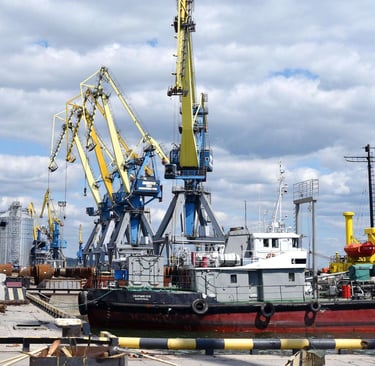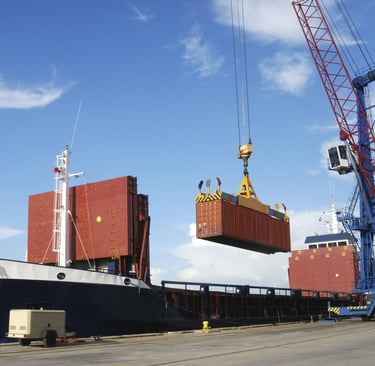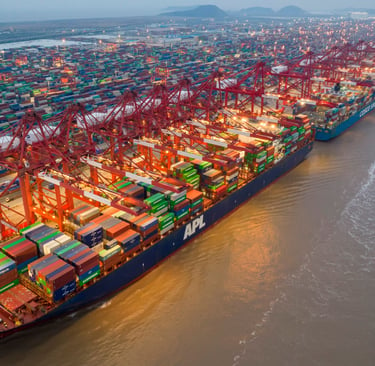📞+86 153 7530 2641 📧 hongjing.Wang@feichuncables.com

What is Insulation and Jacket Shrinkback in Cables?
Learn what insulation and jacket shrinkback in cables means, what causes it, and how to prevent it. This guide covers cable shrinkback risks, manufacturing controls, and industry standards like IEEE 1210 and UL 2556. Essential for high-reliability cable applications.
hongjing.Wang@Feichun
7/31/202510 min read
Introduction
In the world of electrical engineering and cable manufacturing, insulation and jacket shrinkback represents one of the most critical yet often overlooked phenomena that can compromise cable integrity and electrical safety. Shrinkback refers to the tendency of cable insulation or outer jacket materials to retract or pull back from splice points, termination connectors, or along the cable length itself. This seemingly minor issue can have catastrophic consequences, leading to exposed conductors, compromised electrical performance, and potentially dangerous fault conditions.
Understanding shrinkback is essential for engineers, technicians, and installation professionals who work with power cables, control systems, and industrial wiring applications. As electrical systems become more complex and demanding, the reliability of cable connections becomes paramount. Whether in offshore wind installations, industrial crane systems, or critical infrastructure applications, shrinkback can transform a reliable electrical connection into a safety hazard or system failure point.
The phenomenon affects various cable types differently, from low-voltage control cables to high-voltage power transmission lines. As environmental conditions become more extreme and installation requirements more stringent, the cable industry has developed sophisticated methods to predict, prevent, and mitigate shrinkback issues. This comprehensive understanding ensures long-term system reliability and operational safety across diverse applications.


What is Insulation and Jacket Shrinkback?
Insulation and jacket shrinkback is the physical retraction of polymer-based cable materials away from their intended positions, typically occurring at termination points, splice locations, or along cable segments. This phenomenon manifests differently depending on whether it affects the insulation layer surrounding individual conductors or the outer protective jacket of multi-conductor cables.
When insulation shrinkback occurs, the dielectric material that normally provides electrical isolation between conductors or between conductors and ground pulls away from connection points. This retraction exposes bare copper or aluminum conductors, creating potential pathways for electrical faults, short circuits, or dangerous arcing conditions. The exposed conductor length can vary from millimeters to several centimeters, depending on the severity of the shrinkback and the specific material properties involved.
Jacket shrinkback presents different but equally serious concerns. The outer jacket serves as the primary barrier against environmental contaminants such as moisture, chemicals, dust, and mechanical damage. When jacket shrinkback occurs, it creates entry points that allow these contaminants to penetrate into the cable core, potentially causing corrosion, insulation degradation, or complete cable failure over time.
Real-world examples of shrinkback problems are numerous across industrial applications. In marine environments, shrinkback at cable terminations can allow saltwater ingress, leading to rapid corrosion and system failures. Industrial crane cables subjected to continuous flexing and temperature variations often experience shrinkback that exposes conductors to mechanical damage. Power distribution systems in manufacturing facilities have experienced arc flash incidents directly attributed to shrinkback-exposed conductors creating unintended fault paths.
The economic impact of shrinkback extends beyond immediate repair costs. Unplanned shutdowns, safety investigations, and preventive maintenance programs all contribute to the total cost of ownership for electrical systems affected by this phenomenon.


Causes of Shrinkback
Understanding the root causes of shrinkback requires examining the complex interplay between material science, manufacturing processes, and service conditions. The primary cause stems from thermal stress introduced during the cable extrusion process. During manufacturing, polymer insulation and jacket materials are heated to molten states and forced through extrusion dies at specific rates. If the conductor moves through the extruder head faster than the molten polymer compound, the material becomes mechanically stretched. When this stretched polymer cools and solidifies, it becomes "frozen" in this stressed condition, creating internal tensions that drive future shrinkage.
The cooling process itself plays a crucial role in shrinkback development. Rapid cooling can trap internal stresses within the polymer matrix, while controlled cooling allows these stresses to relax naturally. Manufacturing facilities that lack proper cooling controls or attempt to maximize production speeds often produce cables with higher shrinkback tendencies. The cooling rate must be carefully balanced to achieve proper polymer crystallization while minimizing residual stress formation.
Material properties significantly influence shrinkback susceptibility. Thermoplastic materials such as polyvinyl chloride (PVC) and polyethylene (PE) exhibit memory effects, meaning they tend to return to their pre-extruded molecular configuration when subjected to thermal cycling or mechanical stress. This memory effect becomes more pronounced when materials are exposed to temperatures approaching their glass transition points or melting ranges.
Cross-linked materials behave differently due to their three-dimensional molecular structure. Cross-linked polyethylene (XLPE) and ethylene propylene rubber (EPR) form permanent chemical bonds during the curing process, which helps resist shrinkback by preventing the material from reverting to its original state. However, even cross-linked materials can experience shrinkage if the cross-linking process is incomplete or if excessive thermal stress is applied during service.
Mechanical stress during installation and service represents another significant cause of shrinkback. Excessive pulling forces during cable installation can introduce additional stress into the polymer structure. Repeated flexing in applications such as crane cables or robotic systems creates fatigue conditions that accelerate shrinkback development. The combination of mechanical stress and elevated temperatures creates particularly challenging conditions that can overwhelm even well-designed cable systems.
Environmental factors compound these issues significantly. Long-term exposure to temperatures near or above the cable's rated limits can cause gradual polymer relaxation and shrinkage. Temperature cycling, where cables experience repeated heating and cooling cycles, accelerates the shrinkback process by providing the thermal energy needed for molecular chain rearrangement. UV exposure, chemical contamination, and moisture ingress can also degrade polymer properties and increase shrinkback susceptibility.


Effects and Risks of Shrinkback
The consequences of insulation and jacket shrinkback extend far beyond cosmetic appearance issues, creating serious safety hazards and performance degradation that can compromise entire electrical systems. When conductor insulation pulls back from termination points, the exposed metal creates multiple failure modes that threaten both equipment and personnel safety.
Exposed conductors represent the most immediate and dangerous consequence of insulation shrinkback. These bare metal surfaces can create unintended electrical pathways between phases, between phases and ground, or between different voltage levels within the same system. Arc flash incidents, which can reach temperatures exceeding 35,000 degrees Fahrenheit, often originate from shrinkback-exposed conductors that allow electrical energy to bridge across insulation gaps. The resulting explosion and intense heat can cause severe injuries or fatalities to nearby personnel.
Short circuit conditions develop when exposed conductors make contact with grounded surfaces or other conductors. These faults can cause immediate equipment damage, system shutdowns, and potential fire hazards. The fault current levels in industrial electrical systems can reach tens of thousands of amperes, creating tremendous electromagnetic forces that can cause additional mechanical damage to surrounding equipment.
The degradation of dielectric strength represents a subtler but equally concerning consequence of shrinkback. As insulation thickness effectively decreases due to material retraction, the voltage stress across the remaining insulation increases proportionally. This elevated stress can lead to premature insulation breakdown, partial discharge activity, and accelerated aging of the entire cable system. Power quality issues such as harmonic distortion and voltage fluctuations often trace back to compromised insulation systems affected by shrinkback.
Jacket shrinkback creates environmental sealing failures that allow contaminants to penetrate cable assemblies. Moisture ingress represents the most common and damaging form of contamination, as water can cause conductor corrosion, insulation swelling, and dramatic reductions in dielectric strength. In marine applications, salt water creates particularly aggressive corrosion conditions that can destroy cable cores within months of initial contamination.
Chemical contamination through compromised jacket sealing can be equally destructive. Industrial environments often contain oils, solvents, acids, or other chemicals that can attack insulation materials, causing swelling, hardening, or complete dissolution of polymer components. These chemical attacks can progress rapidly once contamination pathways are established through shrinkback-created openings.
Long-term performance degradation affects system reliability even when immediate failures don't occur. Cables with shrinkback issues often exhibit gradually increasing resistance, reduced current-carrying capacity, and decreased fault tolerance. Maintenance costs increase as these systems require more frequent inspection, testing, and eventual replacement. The unpredictable nature of shrinkback-related failures makes system planning and maintenance scheduling more difficult and expensive.


Prevention and Best Practices
Preventing shrinkback requires a comprehensive approach that addresses material selection, manufacturing processes, installation practices, and ongoing maintenance considerations. The most effective prevention strategies begin during the cable design and manufacturing phases, where proper material choices and process controls can eliminate many shrinkback-related issues before they develop.
Material selection represents the foundation of shrinkback prevention. Cross-linked materials such as XLPE and EPR offer superior resistance to shrinkage due to their three-dimensional molecular structure. These materials cannot revert to their original molecular configuration once properly cross-linked, providing inherent resistance to thermal and mechanical stress-induced shrinkage. When selecting cable materials, engineers should prioritize compounds with low coefficients of thermal expansion and proven track records in similar applications.
Manufacturing process controls play equally important roles in shrinkback prevention. Controlled cooling protocols ensure that extruded materials solidify gradually, allowing internal stresses to relax naturally rather than becoming trapped within the polymer matrix. Annealing processes, where finished cables are subjected to controlled heating and cooling cycles, can further reduce residual stresses that contribute to shrinkback development.
Quality control testing during manufacturing should include accelerated aging tests that simulate long-term service conditions. Heat aging tests, where cable samples are exposed to elevated temperatures for extended periods, can reveal shrinkage tendencies before cables are shipped to customers. Dimensional stability testing under thermal cycling conditions provides additional insight into material behavior under service conditions.
Installation best practices focus on minimizing additional stress introduction during cable placement and termination. Proper pulling techniques, including the use of appropriate lubricants and tension monitoring equipment, prevent excessive mechanical stress that can contribute to future shrinkage. Cable bending radius requirements must be strictly observed, as tight bends create stress concentrations that accelerate shrinkback development.
Termination and splicing procedures require special attention to prevent shrinkback-related failures. Proper preparation techniques, including controlled stripping depths and insulation overlap requirements, provide margins of safety that account for potential future shrinkage. Heat-shrink termination systems should be applied according to manufacturer specifications, ensuring complete adhesion and stress relief at critical interfaces.
Environmental considerations during installation and service can significantly impact shrinkage development. Cable routing should avoid areas with excessive temperature exposure, such as near heating equipment or in direct sunlight. When temperature exposure is unavoidable, cables should be selected with appropriate temperature ratings that provide adequate safety margins. Protective conduits or cable trays can provide additional thermal protection in challenging environments.
Preventive maintenance programs should include regular inspection of termination points and splice locations for signs of shrinkage development. Thermal imaging can identify hot spots that may indicate compromised connections due to shrinkback. Periodic resistance measurements can detect increasing contact resistance that often precedes visible shrinkage symptoms.


Industry Standards and Testing Methods
The cable industry has developed comprehensive standards and testing methodologies to address shrinkback issues systematically. These standards provide consistent frameworks for measuring, evaluating, and controlling shrinkage in various cable types and applications.
IEEE 1210 establishes standardized test methods for measuring insulation shrinkback in power cables. This standard specifies precise procedures for sample preparation, test conditions, and measurement techniques that ensure consistent and repeatable results across different laboratories and manufacturers. The standard defines acceptable shrinkage limits for different cable types and voltage classes, providing clear criteria for product acceptance or rejection.
The IEEE 1210 test methodology involves subjecting prepared cable samples to controlled heating cycles while monitoring dimensional changes. Test specimens are prepared with specific conductor exposure lengths, heated to defined temperatures for prescribed durations, and then measured to determine the amount of insulation retraction. The standard specifies different test conditions for different cable types, acknowledging that various applications may have different shrinkage tolerance requirements.
UL 2556 provides comprehensive guidelines for evaluating jacket and insulation shrinkage in various cable constructions. This standard addresses both individual conductor insulation and overall cable jacket behavior, recognizing that different shrinkage mechanisms may affect these components differently. UL 2556 testing protocols include both thermal aging and mechanical stress components, providing more realistic simulation of actual service conditions.
The UL standard emphasizes the importance of sample conditioning before testing, recognizing that cable storage and handling conditions can influence shrinkage behavior. Proper conditioning protocols ensure that test results accurately reflect long-term service performance rather than short-term storage effects.
ICEA S-95-658 specifically addresses shrinkback control in power cable applications, providing detailed specifications for manufacturing processes and quality control procedures. This standard recognizes that power cables operate under more demanding conditions than many other cable types, requiring more stringent shrinkage control measures.
The ICEA standard includes requirements for manufacturing process validation, ongoing quality control testing, and documentation of shrinkage performance data. Manufacturers must demonstrate compliance through both prototype testing and ongoing production monitoring, ensuring consistent performance across entire product lines.
Additional standards from organizations such as ASTM, IEC, and CSA provide complementary testing methods and acceptance criteria for specific applications or geographic regions. These standards often incorporate region-specific environmental conditions or installation practices that may affect shrinkage behavior.
Testing equipment and procedures continue to evolve as measurement technology advances. Modern dimensional measurement systems can detect shrinkage changes measured in micrometers, providing unprecedented precision in shrinkage evaluation. Automated testing systems can perform multiple test cycles with minimal operator intervention, improving test consistency and reducing measurement uncertainty.


Conclusion
Understanding insulation and jacket shrinkback represents a critical competency for engineers, technicians, and installation professionals working with cable systems across diverse applications. This phenomenon, while often subtle in its initial manifestation, can create serious safety hazards, performance degradation, and economic consequences that extend far beyond the immediate cable system.
The complex interplay between material properties, manufacturing processes, installation practices, and service conditions requires a comprehensive approach to shrinkback prevention and control. Success depends on making informed material selections that prioritize dimensional stability, implementing manufacturing processes that minimize residual stress formation, and following installation practices that avoid introducing additional stress into cable systems.
Quality materials alone cannot guarantee shrinkage-free performance without proper manufacturing controls and installation techniques. Conversely, even the most careful installation practices cannot overcome fundamental material limitations or manufacturing defects. The most effective approach integrates all these elements into a cohesive strategy that addresses shrinkage risks throughout the cable lifecycle.
Industry standards and testing methodologies provide essential frameworks for evaluating and controlling shrinkage behavior, but their effective implementation requires understanding both the technical requirements and the practical limitations of testing procedures. Engineers must be able to interpret test results in the context of specific application requirements and service conditions.
The critical applications mentioned throughout this discussion – industrial cranes, shore power systems, mobile cable systems, and other demanding environments – cannot tolerate the reliability compromises introduced by shrinkage-related failures. In these applications, the cost of prevention through proper material selection and manufacturing controls is invariably less than the cost of failure-related consequences.
As electrical systems continue to evolve toward higher power densities, more demanding environmental conditions, and increased reliability requirements, shrinkage control becomes increasingly important. The cable industry's continued development of advanced materials, improved manufacturing processes, and more sophisticated testing methods reflects this growing importance.
Success in managing shrinkage risks requires ongoing attention to emerging technologies, evolving standards, and lessons learned from field experience. The most effective practitioners combine theoretical understanding of shrinkage mechanisms with practical experience in material behavior, manufacturing capabilities, and installation realities.
Ultimately, preventing shrinkage-related failures requires treating cable systems as integrated components within larger electrical systems, recognizing that cable performance affects overall system reliability, safety, and economic performance. This systems-level perspective ensures that shrinkage prevention efforts align with broader project objectives and operational requirements, delivering reliable electrical infrastructure that meets both immediate and long-term performance expectations.
How to Reach Us
Get in Touch
SiteMap
Product Catalogue
Reeling Cable
Festoon Cable
Shore Power Cable




Scan to add us on WeChat
